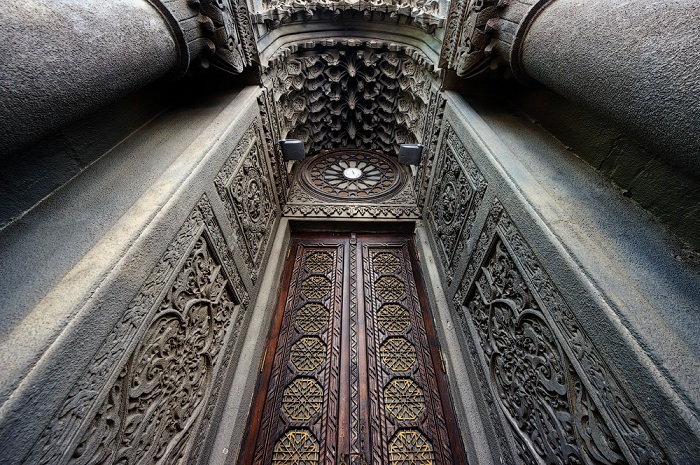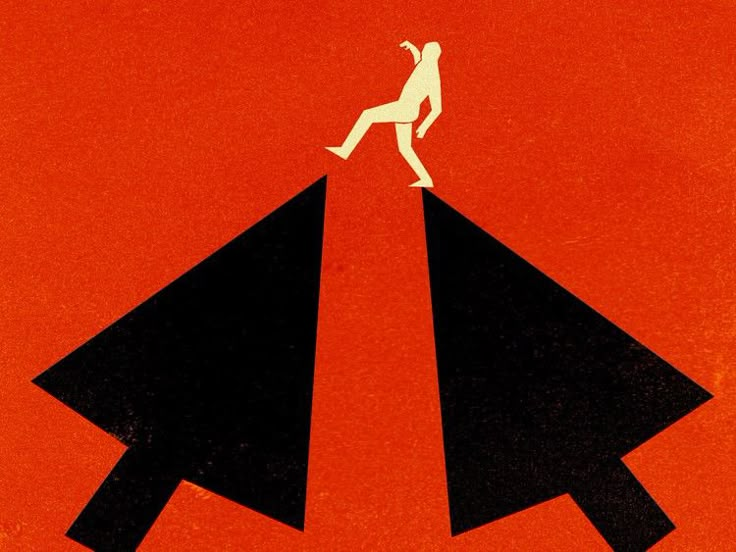 During my stay in Barcelona I have done an exciting walking tour through Gaudi’s heritage, which adorns Catalonian capital for more than a century and attract millions of visitors each year. It is worth to mention that Antoni Gaudí is the brightest representative of Catalan Modernism, a true genius, who got ahead of his time.
During my stay in Barcelona I have done an exciting walking tour through Gaudi’s heritage, which adorns Catalonian capital for more than a century and attract millions of visitors each year. It is worth to mention that Antoni Gaudí is the brightest representative of Catalan Modernism, a true genius, who got ahead of his time.
The first Gaudí’s building that I found in the city was the Palau Güell, located in the Raval district, just a few minutes away from the busy and always full of tourists Rambla street.
 Designed between 1886 and 1889, the Palau Güell is defined as one of Antoni Gaudí’s early works in Barcelona and one of the most magnificent buildings of the Modernism. From 1986 it is included in UNESCO World Heritage List. When it was built, it was one of the most luxurious buildings in Barcelona.
Designed between 1886 and 1889, the Palau Güell is defined as one of Antoni Gaudí’s early works in Barcelona and one of the most magnificent buildings of the Modernism. From 1986 it is included in UNESCO World Heritage List. When it was built, it was one of the most luxurious buildings in Barcelona.
Another building that I noticed in my way to the hostel was Casa Milà, or La Pedrera (translates to “the quarry house”). Casa Milà got this nickname because of the unusual construction. The large stone slabs of the facade were attached first and then worked on by the stonemasons. And the facade, with its irregular shapes, reminds of a quarry. It impressed me by its massive construction. What is interesting, it is the last building of the ingenious architect, before he devoted himself completely to the construction of the Sagrada Familia.
 The second day of my trip I went to Park Guell, the landscaped park, created on a hill above the city. The park was based on the English garden-city concept and evolved as a luxury development comprising some 60 detached dwellings for families. However, the outbreak of the First World War, and the limited interest in the project, turned Güell and Gaudí’s design plan into a commercial failure. Because of that sometimes it is defined as an ‘utopian vision of paradise lost’. What should have been a large-scale development was reduced to three plots of land: one for the Trias family, one for the Güell family and another for Gaudí. This park as well as his other projects is a perfect display of the idea of symbiosis between man and nature
The second day of my trip I went to Park Guell, the landscaped park, created on a hill above the city. The park was based on the English garden-city concept and evolved as a luxury development comprising some 60 detached dwellings for families. However, the outbreak of the First World War, and the limited interest in the project, turned Güell and Gaudí’s design plan into a commercial failure. Because of that sometimes it is defined as an ‘utopian vision of paradise lost’. What should have been a large-scale development was reduced to three plots of land: one for the Trias family, one for the Güell family and another for Gaudí. This park as well as his other projects is a perfect display of the idea of symbiosis between man and nature
 There is a lot can be said about Gaudí’s genius; however, in this article I would like to tell a few words also about another distinguished architect Vladislav Gorodetsky. He is not so well-known as his Catalonian coeval. Maybe because he spent most of his life in Eastern Europe, which is not so much involved in what we used to call “the European context”. Born 11 years later than Gaudí in the Podillya region of nowadays Ukraine, Gorodetsky become famous for his mysterious and eccentric buildings. When I have been in Barcelona I always kept in mind works of this misjudged artist.
There is a lot can be said about Gaudí’s genius; however, in this article I would like to tell a few words also about another distinguished architect Vladislav Gorodetsky. He is not so well-known as his Catalonian coeval. Maybe because he spent most of his life in Eastern Europe, which is not so much involved in what we used to call “the European context”. Born 11 years later than Gaudí in the Podillya region of nowadays Ukraine, Gorodetsky become famous for his mysterious and eccentric buildings. When I have been in Barcelona I always kept in mind works of this misjudged artist.
While Gaudí is famous for his the Sagrada Família church, Gorodetsky built The St. Nicholas Roman Catholic Cathedral in Kyiv. This spectacular building, jutting out into the sky with two slender towers, is one of the most unusual and beautiful one in the Old Kyiv. Raised in untypical for Ukraine’s capital Neo Gothic style, it significantly stands out against the background of other buildings at the city’s downtown.
The most interesting works of Gorodetsky is the House with Chimaeras.  It was constructed in an Art Nouveau style. The building derives its popular name from the ornate decorations depicting exotic animals and hunting scenes, which were sculpted by Italian architect Emilio Sala since Horodecki was an avid hunter. The name does not refer to the chimaera of mythology, but to an architectural style known as chimaera decoration in which animal figures are applied as decorative elements to a building. Horodecki unique architectural style earned him praise as the Antoni Gaudí of Kyiv.
It was constructed in an Art Nouveau style. The building derives its popular name from the ornate decorations depicting exotic animals and hunting scenes, which were sculpted by Italian architect Emilio Sala since Horodecki was an avid hunter. The name does not refer to the chimaera of mythology, but to an architectural style known as chimaera decoration in which animal figures are applied as decorative elements to a building. Horodecki unique architectural style earned him praise as the Antoni Gaudí of Kyiv.
His was also an author of the project of the Karaite Kenesa (Karaite synagogue), was bu ilt from 1898 to 1902 in the Moorish style. The building was decorated with magnificent dome of great beauty with stucco decorations of Italian sculptor Emilio Sala using quite expensive at the time material – cement. It was constructed on funds of “tobacco kings” of South-Western land (the name of Ukraine during tsarist times) Solomon and Moses Kogen.
ilt from 1898 to 1902 in the Moorish style. The building was decorated with magnificent dome of great beauty with stucco decorations of Italian sculptor Emilio Sala using quite expensive at the time material – cement. It was constructed on funds of “tobacco kings” of South-Western land (the name of Ukraine during tsarist times) Solomon and Moses Kogen.
References:
https://discover-ukraine.info/places/kyiv/kyiv/879
https://en.wikipedia.org/wiki/Antoni_Gaud%C3%AD
https://en.wikipedia.org/wiki/W%C5%82adys%C5%82aw_Horodecki
http://professional.barcelonaturisme.com/files/8684-484-pdf/bcn005ang.pdf
https://www.citylab.com/design/2012/11/6-ideas-every-city-should-steal-barcelona/3998/
https://www.pps.org/article/barcelona-great-public-spaces
https://www.thenatureofcities.com/2013/07/17/barcelona-gaudis-city/
https://www.nytimes.com/2002/11/24/travel/barcelona-s-great-urban-spaces.html
http://blog.lpainc.com/lpa-blog/bid/25739/Sustainable-Design-Lessons-From-Gaudi






